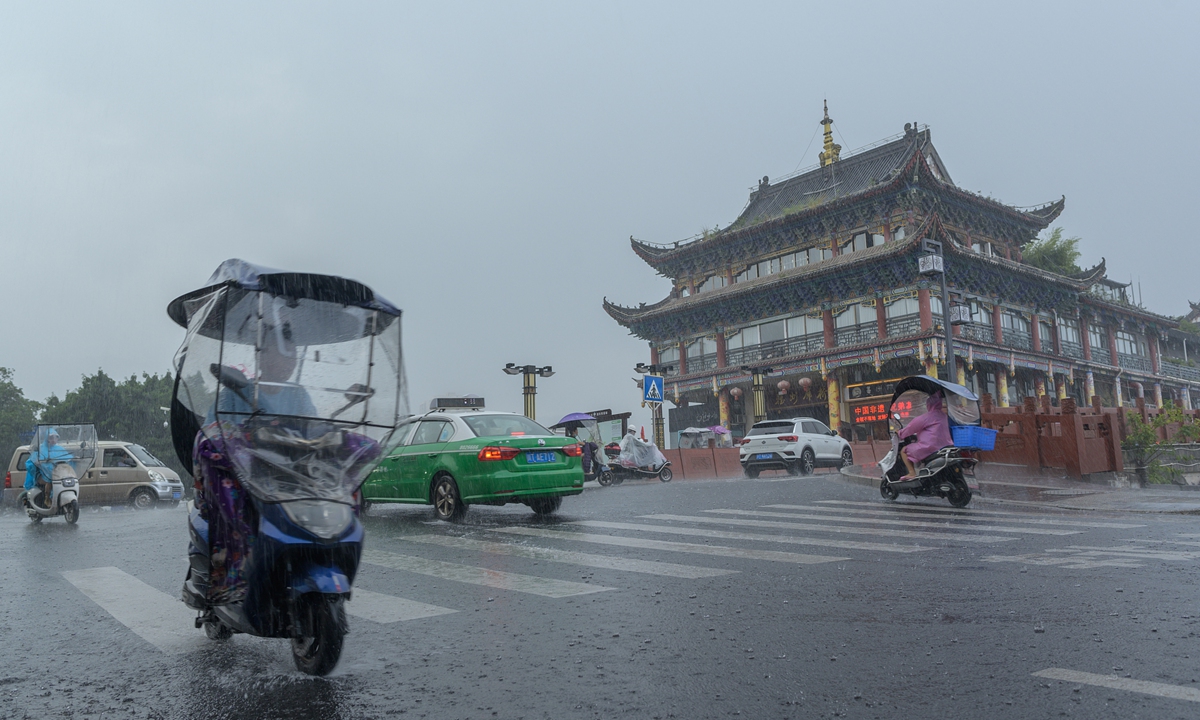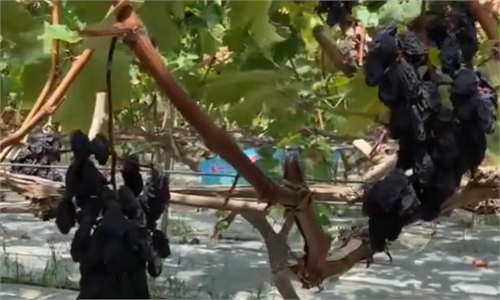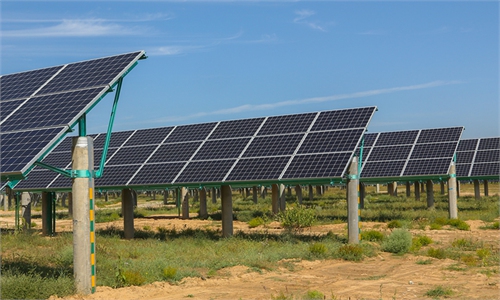
Heavy rain washed Ya'an, SW China's Sichuan Province on August 25, 2022 after days of drought. Photo: CFP
Following a period of electricity shortage caused by high temperatures and drought, Southwest China's Sichuan Province announced plans to lower its energy supply emergency response level from level I to level II starting on Monday. More companies have resumed production as power supplies are restored.With increased rainfall and falling temperatures, Sichuan, a major hydroelectric power generator in the country, has seen its generating capacity recovering and the overall power shortage largely easing, according to a statement by the Sichuan Provincial Economic and Information Department.
As the power shortage eases, more and more companies have reopened. Except for some high energy-consuming enterprises, many factories have fully resumed production, such as Haowu Electromechanical Co, an upstream supplier for automakers. The company announced on Monday that production at one of its subsidiaries in Sichuan had fully resumed.
Sichuan Guoguang Agrochemical Co said in a filing to the Shenzhen Stock Exchange on Monday that both its production lines in Sichuan and neighboring Chongqing city had restored operations.
Changan Auto told investors on Monday that production of its new-energy cars in Sichuan restarted, and operations were back to normal now. The suspension is estimated to have affected the production and sales of about 100,000 units in August, news site yicai.com reported.
Sichuan depends on hydroelectric power, and the recent high temperatures and drought led to insufficient generating capacity, Lin Boqiang, director of the China Center for Energy Economics Research at Xiamen University, told the Global Times.
Multiple provinces have encountered prolonged high temperatures since July. Sichuan, Chongqing and some other regions along the Yangtze River valley have seen tight supplies of electricity and started to restrict power consumption of some industries, so as to meet the demand of residents first.
The power shortages are inevitably going to affect the normal operation of some industries, but to a limited extent, given that the problem only exists briefly, experts have claimed.
Sichuan initiated the level I energy supply emergency response on August 21 and lowered it to level II after nine days. As of Sunday noon, electricity supply for general businesses and industrial production had resumed, and supply to large-scale industries was also being restored, the China Media Group learned from the State Grid.
Meanwhile, Chongqing city authorities on Monday canceled the level I alert for heat strokes and forecast that the temperature would stay below 37C starting Monday.


